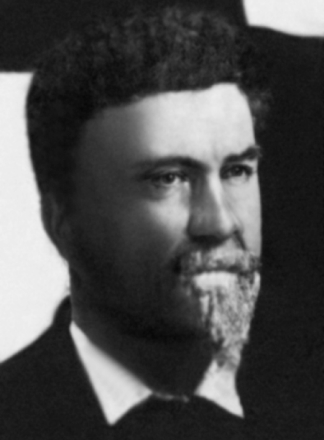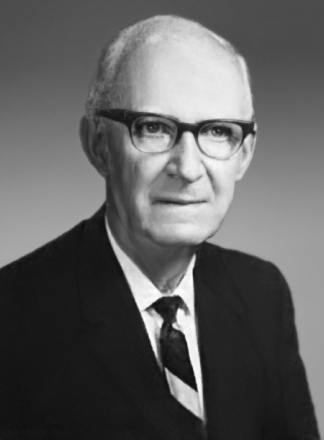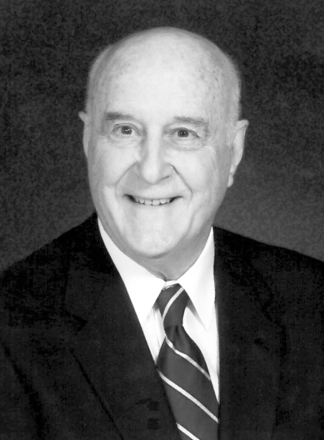College Street Printing Company actually started out as a weekly newspaper called the Waxahachie Mirror on January 5th, 1881 by E.C. Huckabee. Thomas Jefferson Middleton added job printing to the newspaper’s services when he purchased it on May 17, 1887 making it today the oldest continually operating business from the same location in Ellis County and the second oldest in the State of Texas. Thomas was born in Winchester, Tennessee and the family lineage can be traced directly to the South Carolina family of the same name whose ancestors came from England. The Middleton’s were among the pioneers of South Carolina and one of them was a signer of the Declaration of Independence. He was educated at Cumberland University in Lebanon, Tennessee. Mr. Middleton was a very strong, independent thinker. He had strong convictions and was a forceful writer. He was also recognized as an influential leader of his time. His passions were education, the development of good roads, and the plight of the working class. He had regularly corresponded with soon to be President Woodrow Wilson on such matters as well. He was also known to be an accomplished chess player and did so engage in at least one all day bout with then Ringling Brothers Circus executive, Joe E. Ward, whenever the Circus was in Dallas. It would almost seem that Thomas Jefferson Middleton might well have been the 19th century version of “The most interesting man in the world.”
The company originally started out on what was then 602 South Washington Street. On May 21, 1888, a fire destroyed the Baumgartner Building where the Mirror was published but only one issue was lost. After a new outfit was purchased the next issue came out as the Ellis County Mirror. The newspaper was also published for a short time on the second floor of what is now The Doves’s Nest Restaurant and Antique Store. Back in the day, businesses and people moved around quite frequently. While the company was developing its early years, its destined final location at 111 North College had a history of it own. In 1885, it was a harness shop, which turned into a saddlery shop by 1890. In 1893, it was occupied by Howard’s Millinery. In late 1893, a fire destroyed the entire block, but by late 1894 all four buildings on College Street were rebuilt and occupied. In 1904, we were listed as a sample room, probably used to store traveling merchants goods and wares in preparation for a showing. Many of these salesmen stayed in the historic Rogers, so they were in close proximity to their products being stored.
We believe the Middleton’s moved into this building, c.1908 even though they didn’t actually purchase the building until 1912. Thomas J. sold the newspaper part of the business to John P. Cooper in August of 1911. There was a newspaper ad dated August 28, 1911, that reads “In the recent sale of the Mirror we retained the Job Printing department and it will be continued where it has been located for several years. It is only a continuation of an already established business, but will now be under the ownership and management of Marcellus S. and Montgomery Middleton.”
Marcellus “Sales” Middleton worked with his brother Montgomery in the business for 50 years. Ultimately Marcellus ran the business end of the company while Montgomery took care of production. Marcellus was prominently identified with civic and commercial enterprises in Waxahachie. He was the first vice president of the Chamber of Commerce, a member of the Elks, Waxahachie Rotary, Ellis County Country Club and the Presbyterian Church. Marcellus died in 1961, leaving his brother tending to the company interests.
Montgomery Middleton, also a lifetime resident of Waxahachie’s passion was photography. Although he started out in the company with his father in 1905, he was an active factor in building up the success of this splendid establishment with his brother Marcellus. He had many hobbies, but loved trains and some of his photos are on display still to this day around Ellis and Dallas County. He became widely known throughout the state as one of the premier printers. The editor of the Inland Printer magazine, Mr. J. L. Frazier once wrote “The variety and uniform quality of your work make your plant stand out as one of the best in the Lone Star State.” During his tenure as owner, Montgomery also won first place in a national letterhead contest with the Waxahachie Daily Light as his subject. He also brought the first offset cylinder press into the building.
In 1963, Montgomery Middleton retired selling his family’s company to Ralph Robins. Mr. Middleton had been involved in operating it for a total of 63 years. Little is known about the time the Robins family owned the shop which he renamed Robins Printing Company. Prior to owning the company, Mr. Robins worked for a large ad agency in Dallas. It is believed that during the next 11 years it rather declined in customer base and was on the brink of closure when the next owner came along.
Boyd Box was a free-lance commercial artist and copy writer when he graduated from The University of Texas, in 1957. One of his favorite customers was the Steck Company, a large printing company in Austin and at one time the largest in Texas. One of the owners had told him it would make more sense to hire him full-time rather than continue to pay him the fees he was charging as a freelance. While at the Steck company, later renamed Hart Graphics, Boyd had the rare privilege of working with Ladybird Johnson. They worked together while putting together the first newsletter the LBJ Library ever published. He worked for Steck for 15 years and ended up as manager of their bank sales division.
His next job was as president of the Hill Printing and Stationery in Waco. He served in that capacity for 3 years before deciding to look around the state for a smaller printing company to buy. One of the owners of the Steck company advised him that he’d been making money all of his life for someone else and it was time he started making it for himself.
Mr. Box and his wife, Gloria, looked at a few places but decided on Waxahachie. The company at the time seemed to need someone with his experience and they thought that Waxahachie might give them the opportunity to grow. They were right. The city of Waxahachie and its citizens treated the Box’s like they had lived here all their lives. He bought the company in 1974, which he named Box Printing and Advertising. Boyd immediately began updating the shop, installing two new Itek duplicator printing presses and moving away from hand set type to photo typesetting.
Kenneth Denny grew up in Waxahachie and is a 1979 graduate of Waxahachie High School. He graduated from Navarro Junior College in Corsicana and attended the University of Texas at Arlington.
Kenneth started right out of high school working for V.J. Graphics, a division of Ennis Business Forms while he began his college education. In late 1979, he went to work for Safeguard Business Forms as a press helper. He worke for Safeguard for nearly five years leaving as 2nd shift working supervisor. Wanting to make himself more marketable in sheetfed press operations he then accepted a sheetfed pressman position at Box Printing and Advertising in 1984 working for Boyd Box. His background was always in production and as a result has been a journeyman pressman for over 25 years. He worked for Mr. Box for 9 years and up to his retirement when Kenneth assumed ownership in January of 1993.
It is during Kenneth’s ownership that the first computer was brought into the building, and so begins the age of technology. With the launch of Microsoft Windows in 1995 the printing industry would never be the same. Soon everyone was a “desktop publisher.” The earlier years of this new technology made widely available to the general public was by comparison, extremely poor quality. The direction Kenneth took was to stand on the laurels of his predecessors and strongly oppose the new devices until they could offer the quality and consistency in their output they had been accustomed to. Well as technology often does, it got better. Much better. Soon the 2640 dpi phototypesetting equipment was replaced with all Macintosh workstations with a full range of design software, and an imagesetter. It is this step in the evolution of commercial printing that many smaller shops refused to take and would ultimately result in their closure.
In 2003, the company ramped up its production capabilities with it’s first Heidelberg sheet fed press. With the ever changing climate of the buying public a watchful eye was required to monitor the trends as they come and go. The idea was that if we were called upon to produce something that was remotely linked to the industry we could potentially be expected to do it on a regular basis and need to be prepared for that. We never knew what changes were coming, but we did know that when Kenneth bought the company in 1993 if a person needed something printed they either wrote it themselves, typed it themselves, or brought it to the local printer. That was no longer the case.
In 2007, College Street Printing bought and installed its first digital printer capable of running legitimate four color process printing plus matching spot color on stocks up to 130 lb gloss cover in 13 X 19 inch format. This machine allowed quantities of less than 100 full color pieces to be produced at pricing never before available.
In 2012, just as it was in 1887, some 125 years later the company’s success depended on being in front of the technology and development of the time, paying particular attention to consistent quality and customer service.
While the Middleton’s employed their family members in the company, the College Street Printing of today wouldn’t have been possible without the efforts of Laura Ann Box Wright, Dianne Epps, Paul Outon, Joe and Pat Bradley, and even the printers of the future, Rylan and Emily Denny, Paige, Mia & Emily Taylor to name a few. Laura spent many years after school collating in her Daddy’s print shop and Dianne and Joe have a combined 56 years with this company.
“I personally feel very blessed to be associated with all of these very fine people and to have had the opportunity to be such an integral part of a company with such a historic presence in Waxahachie” – Kenneth Denny

Thomas Jefferson Middleton

Montgomery Middleton

Marcus “Sales” Middleton

Boyd Box

Kenneth Denny & Family

State of Texas Proclamation

City of Waxahachie Proclamation













